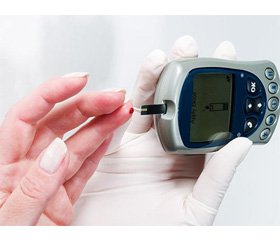Международный эндокринологический журнал 1 (65) 2015
Вернуться к номеру
Combination therapy "Metformin + glimepiride" of the patients with type 2 diabetes mellitus (molecular mechanisms of the rehabilitation effect optimization)
Авторы: V. Poltorak, N. Krasova, M. - SI V. Danilevsky Institute of Endocrine Pathology Problems of NAMS of Ukraine; Gorshunska - Postgraduate Medical Academy, Kharkiv, Ukraine
Рубрики: Эндокринология
Разделы: Справочник специалиста
Версия для печати
type 2 diabetes mellitus, metformin, glimepiride.
Patients with type 2 diabetes mellitus (DM) in connection with the spontaneous evolution of the disease (persistent insulin resistance in combination with the inevitable progression from relative insulin deficiency to absolute one) over time are characterized by a decrease in the effective maintenance of glycemic control by 1st choice medication metformin. Therefore, to achieve target glycemic levels they requires additional stimulation of pancreatic β-cells. The most popular and most studied combination aimed at both defects, which determine the development of metabolic abnormalities in type 2 DM, namely, relative insulin deficiency and insulin resistance, is a combination of sulfonylurea plus metformin. At the same time, for slowing the progression of an absolute insulin deficiency the stimulation of insulin secretion must be "gentle". Such a "gentle" stimulation of β-cells provides a 3rd generation sulfonylurea, glimepiride, which reduces the atherogenic effects (maintaining of the physiological ratio proinsulin/insulin) and slows the development of the phenomenon of β-cells desensitization to physiological (hyperglycemia, arginine) and pharmacological (primarily the 1st and 2nd generation sulfonylureas) stimuli after prolonged β-cells overstimulation. Furthermore, glimepiride maintains protective phenomenon of "ischemic preconditioning" and extends the range of therapeutic effect on the pathophysiological components of the insulin resistance by insulin-sensitizing and insulin-mimetic effects and potentiates the beneficial effects of metformin (particularly through the adiponectin, which is an activator of adenosine monophosphate-activated protein kinase (AMPK), implementer of the biguanide therapeutic action). This is related to the achievement of optimized therapeutic efficacy pharmcombination while reducing side effects (reducing the dose of glimepiride, metformin). The combination of metformin plus glimepiride is an optimal in terms of therapeutic effect on both molecules, the lack of activity which determines the metabolic state of insulin resistance, respectively, AMPK and peroxisome proliferator-activated receptor-γ (PPAR-γ). The therapeutic optimality of the pharmacological combination "metformin + glimepiride" is also based on the unique ability of metformin to eliminate the phenomenon of "hyperglycemic memory" (to prevent/inhibition the development of endothelial dysfunction and vascular complications) by increasing the expression and activity of sirtuin-1, on the one hand, and pathogenically substantiated correspondence of rehabilitative effects of such a combination with spontaneous evolution of type 2 DM, on the other.

